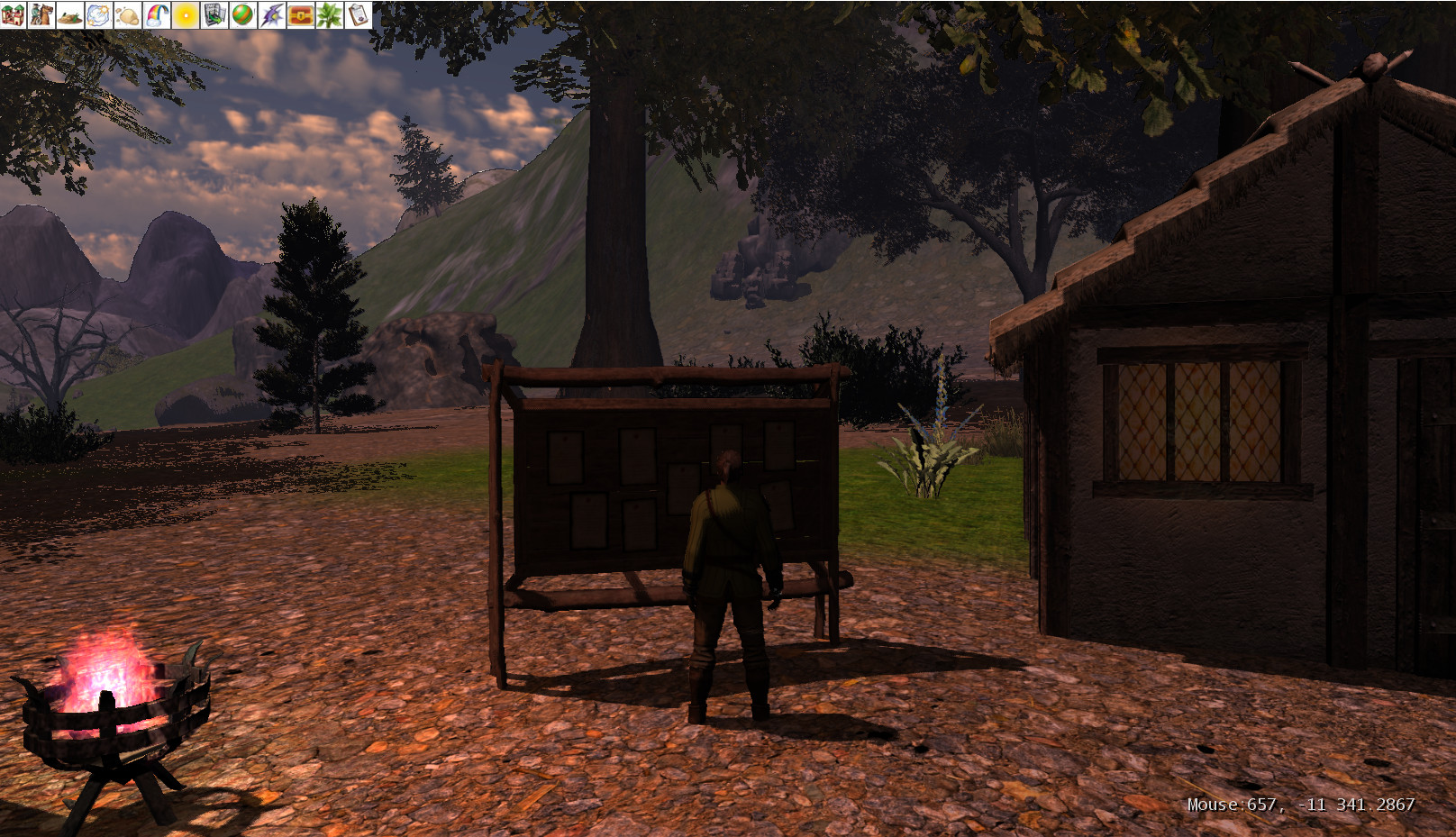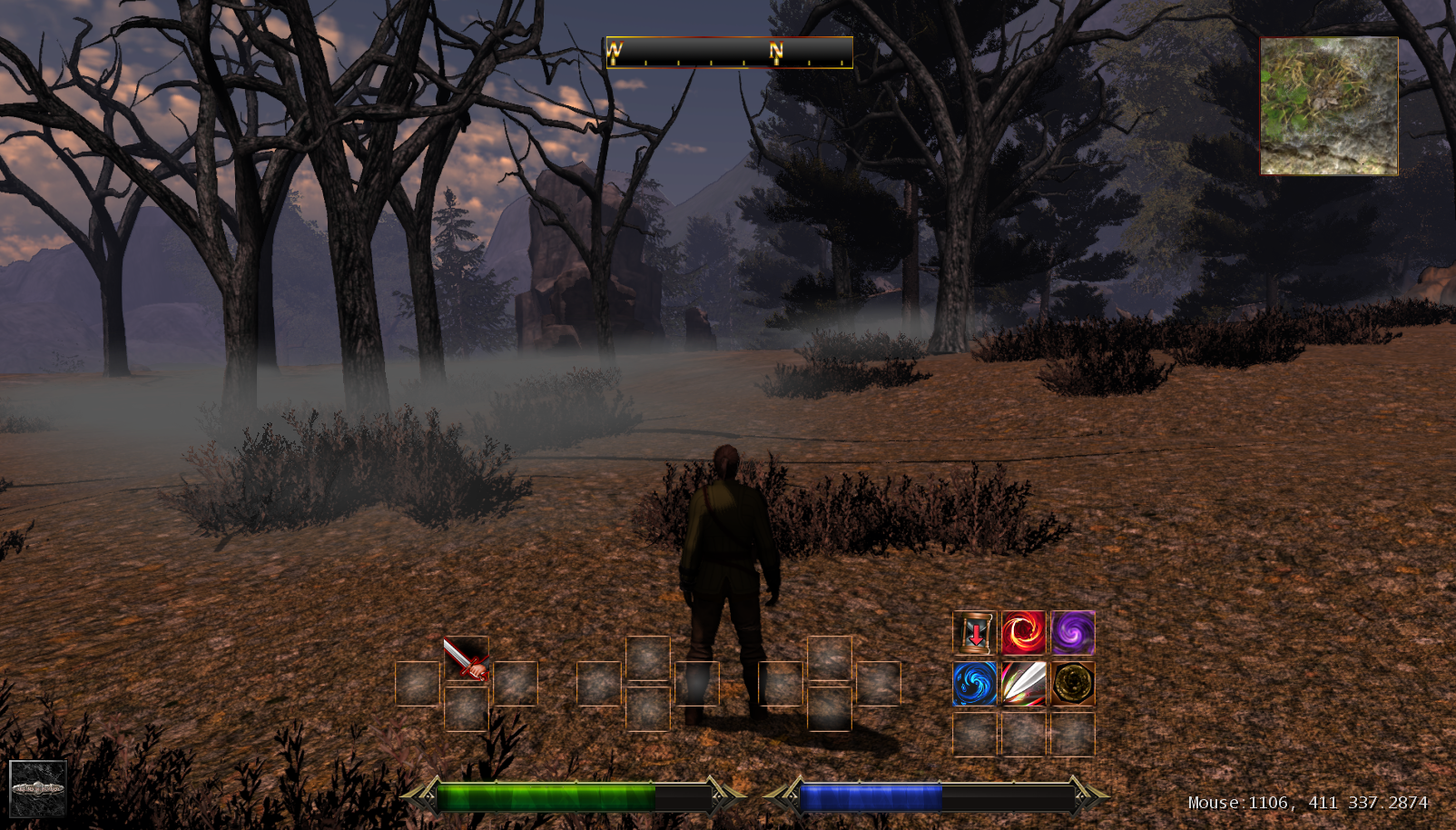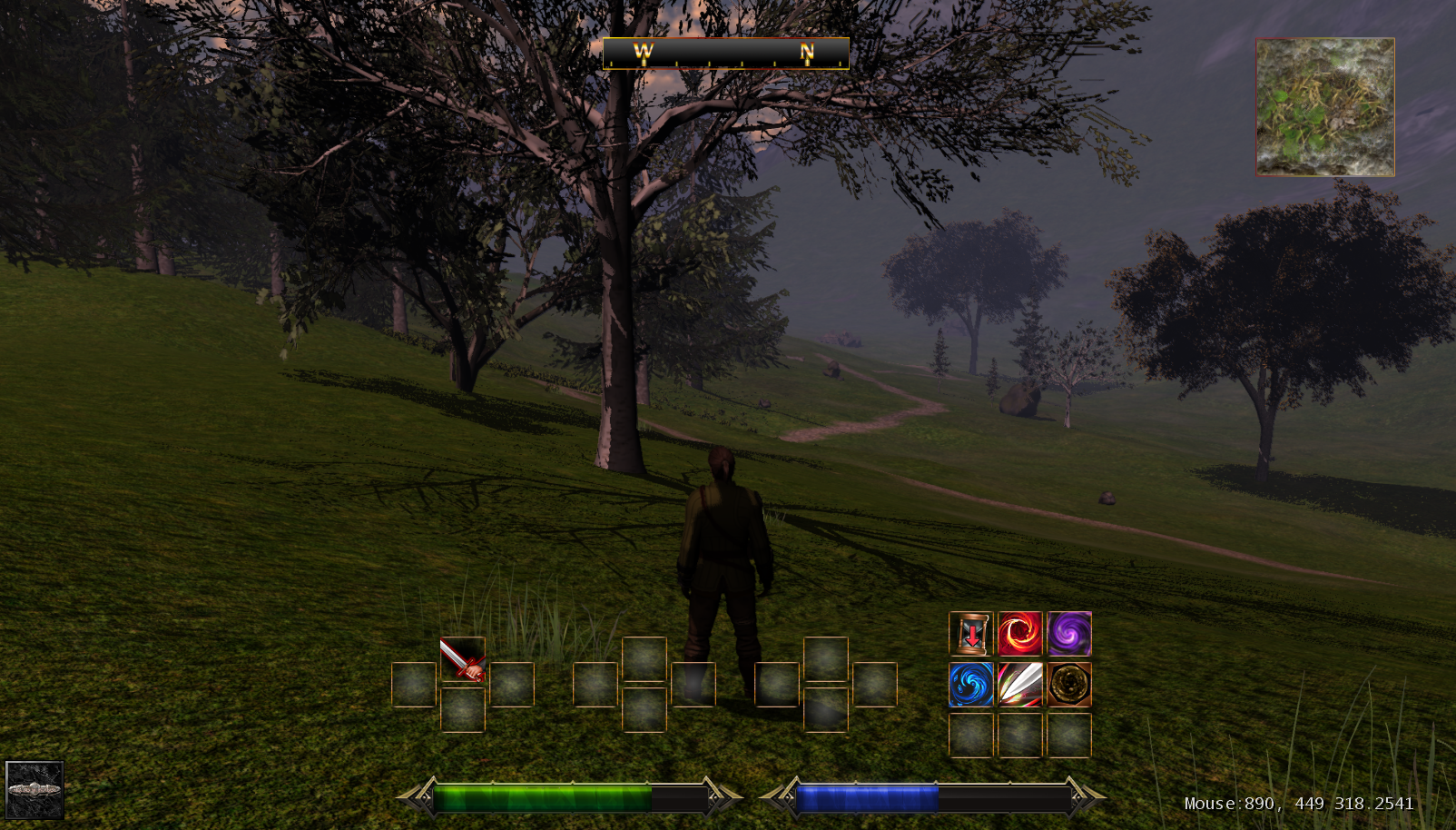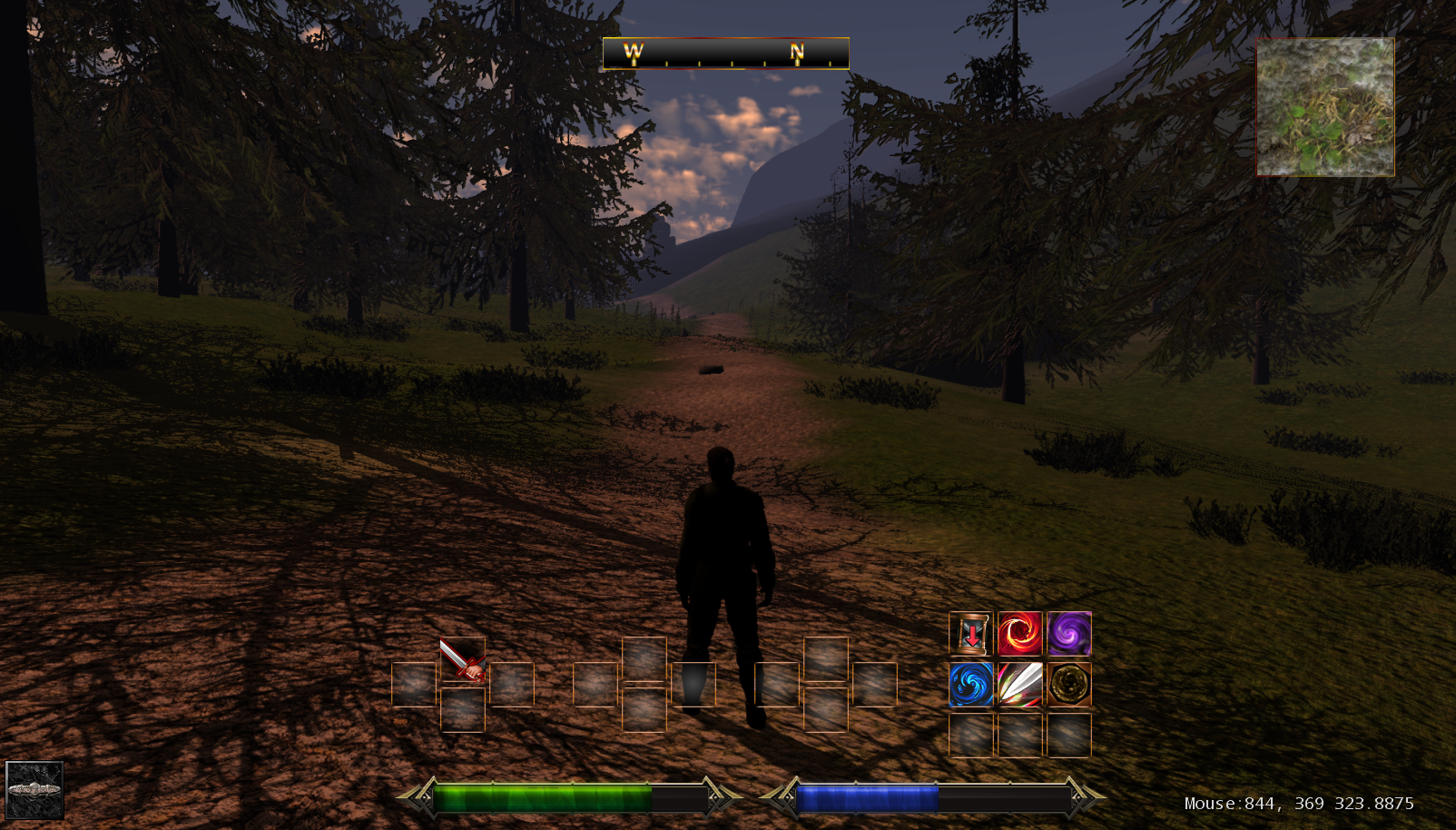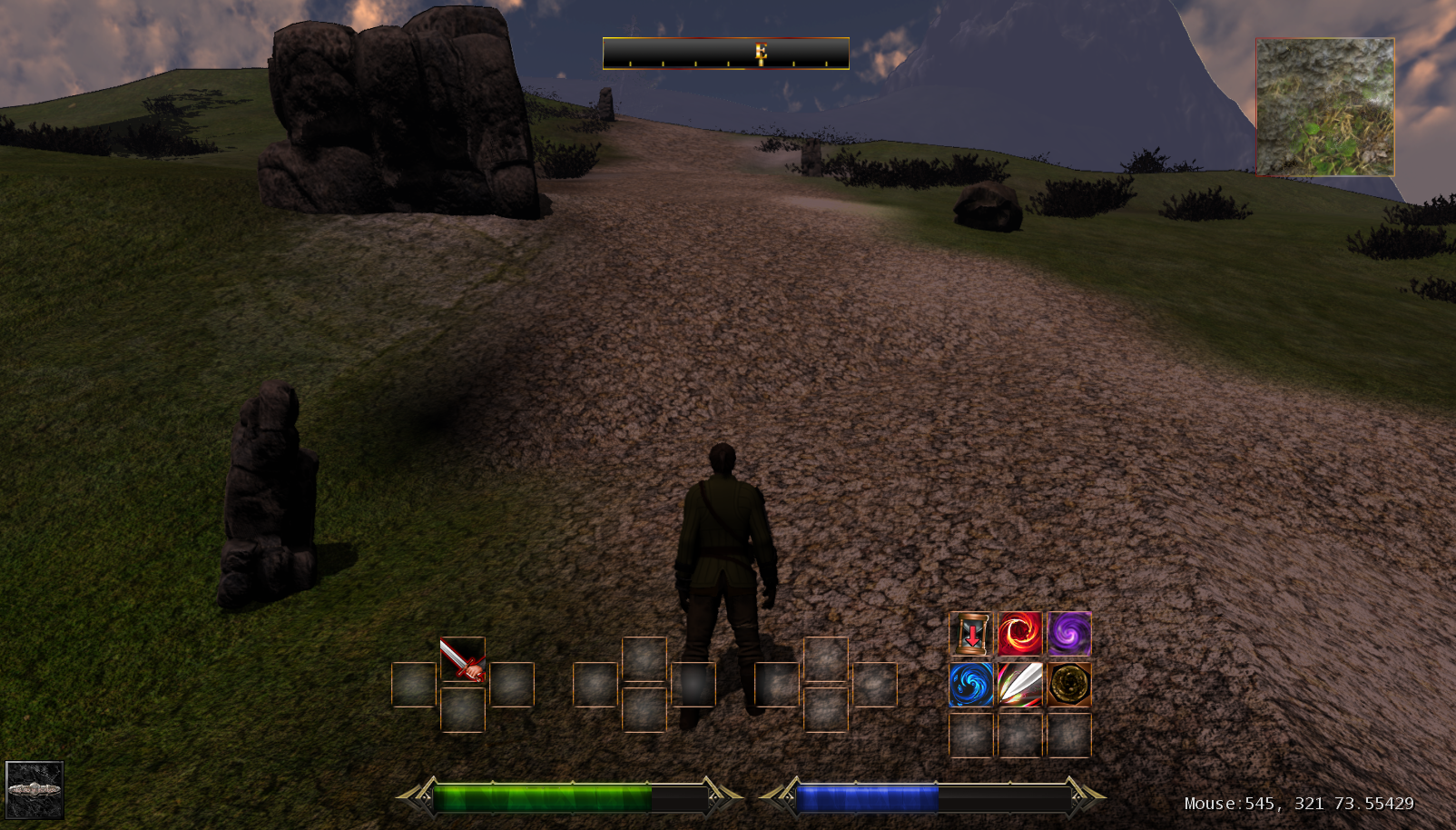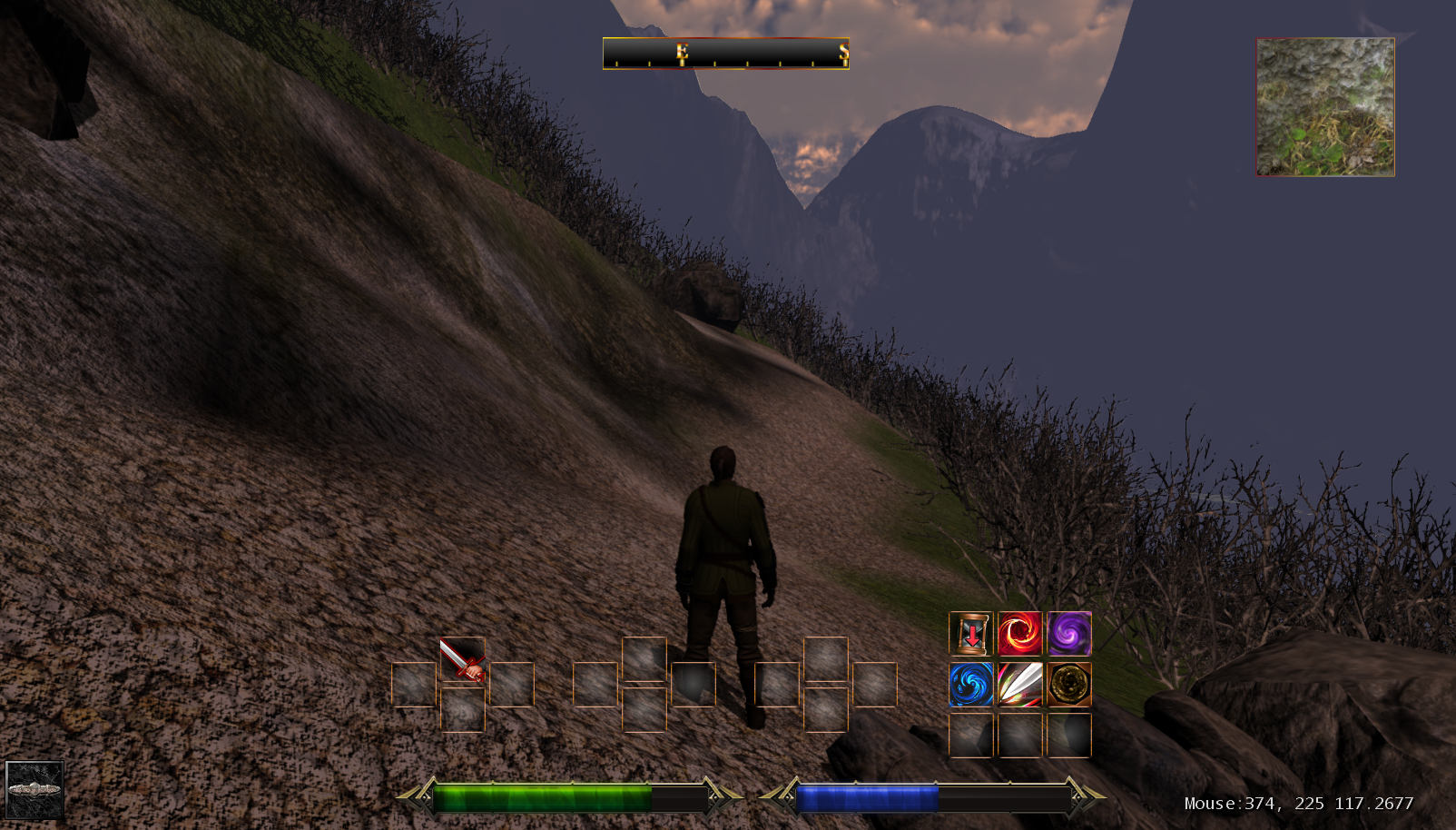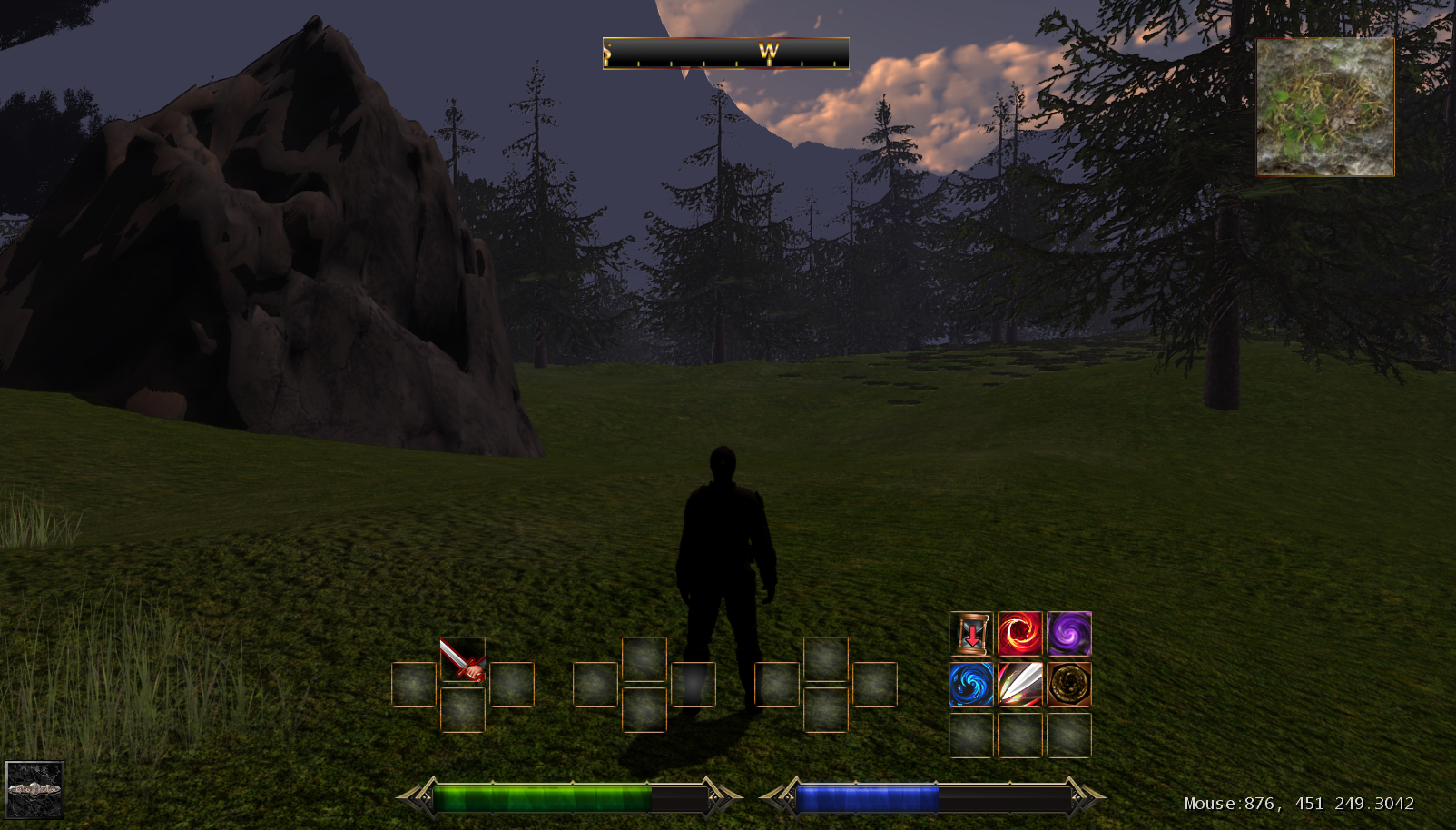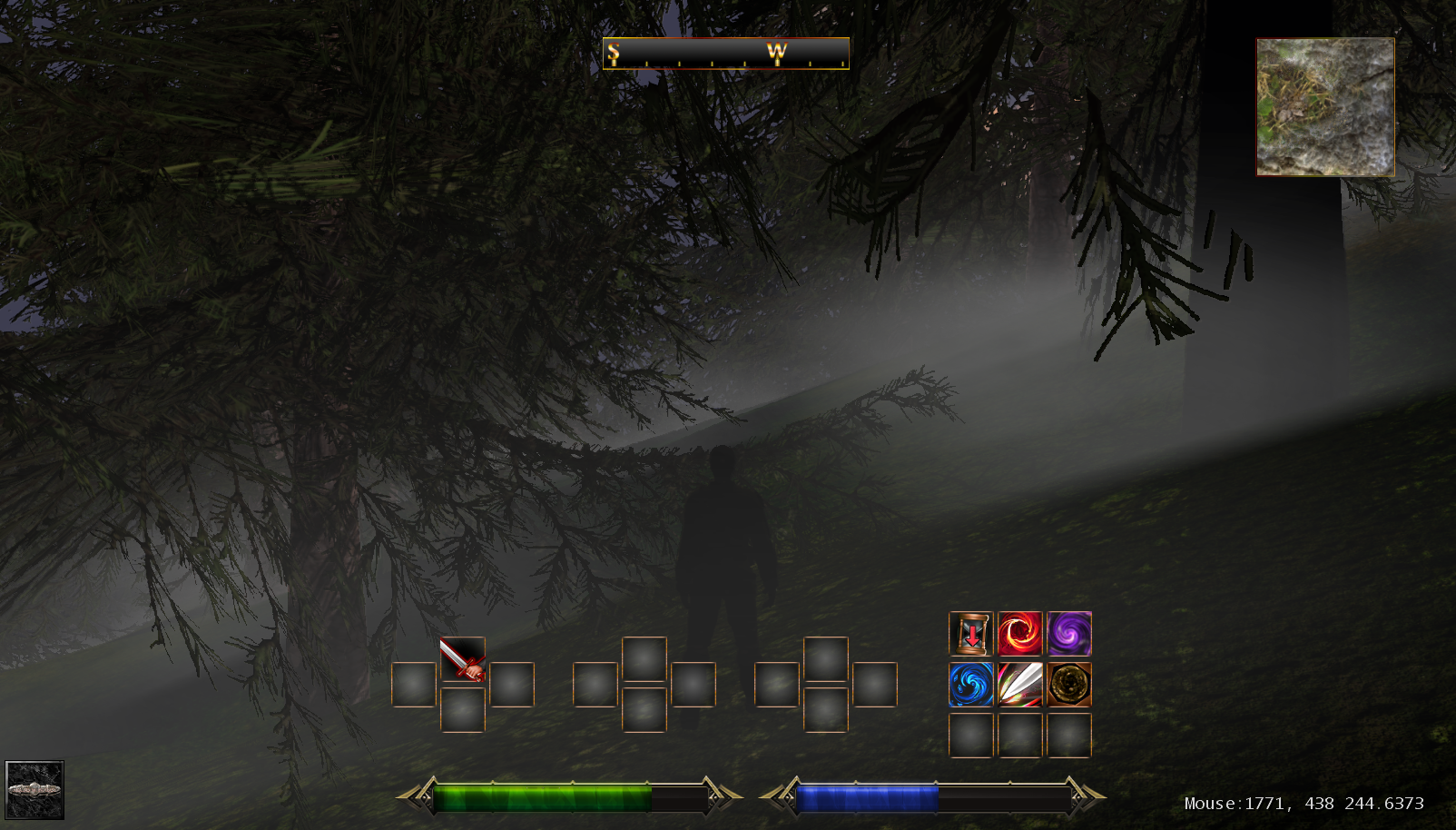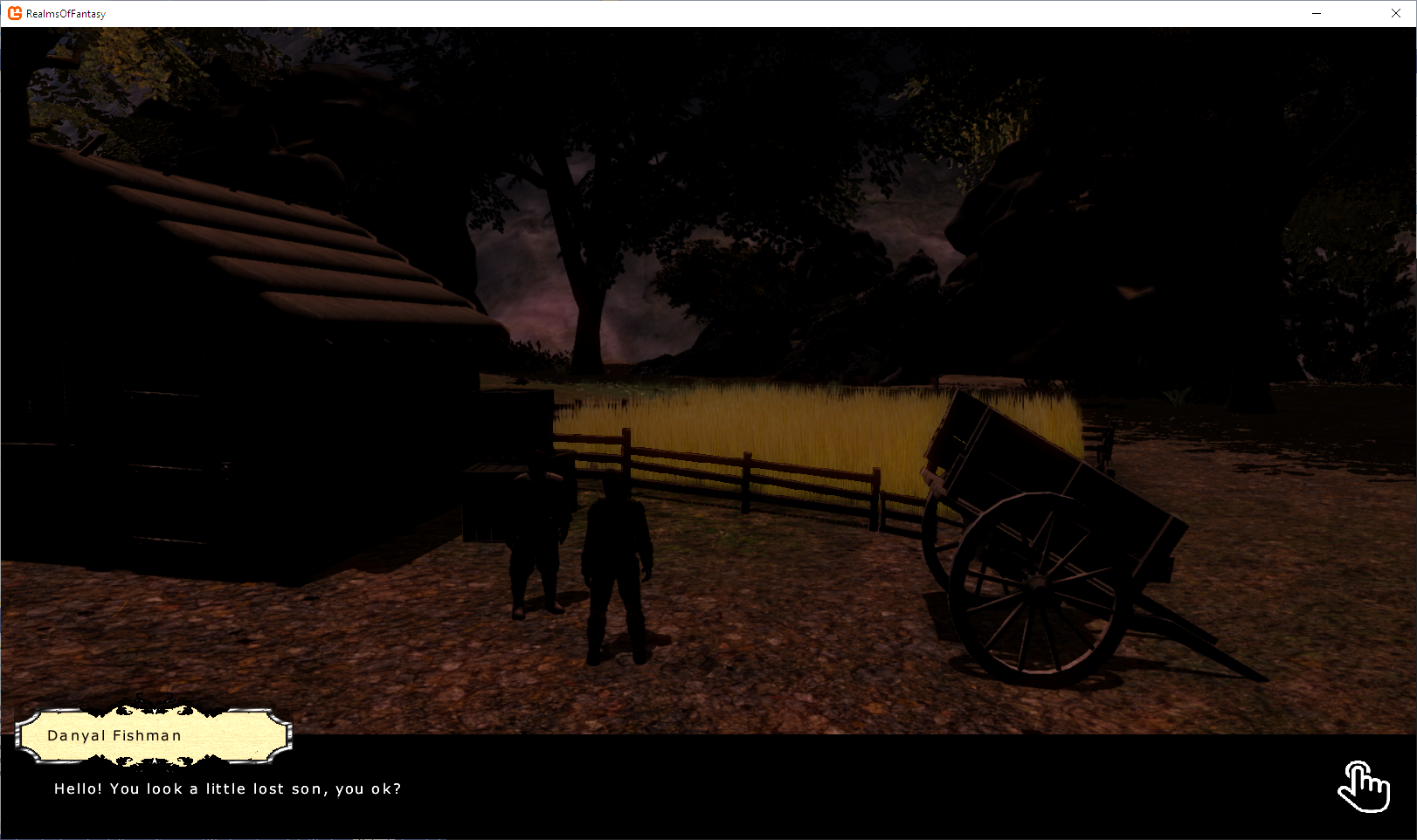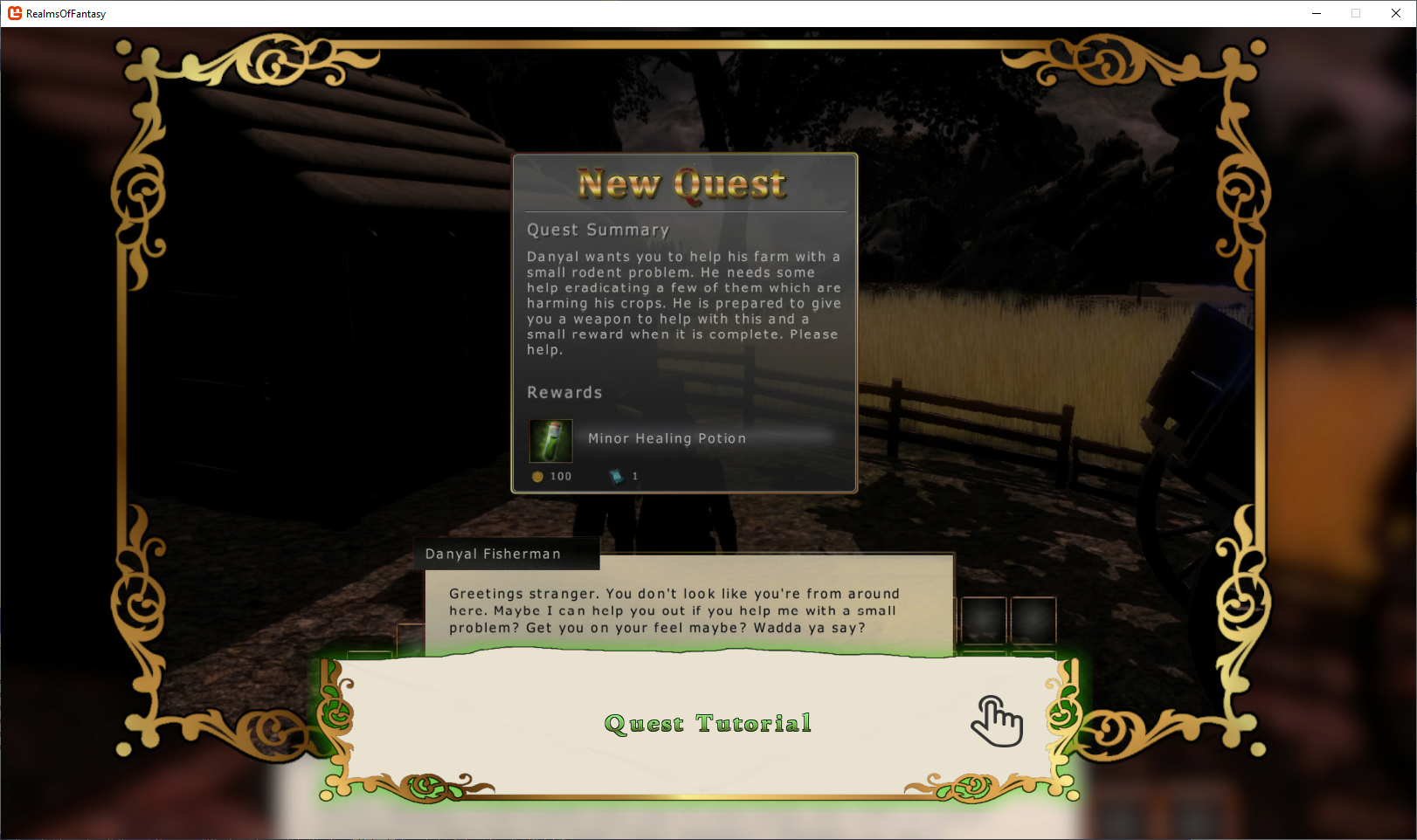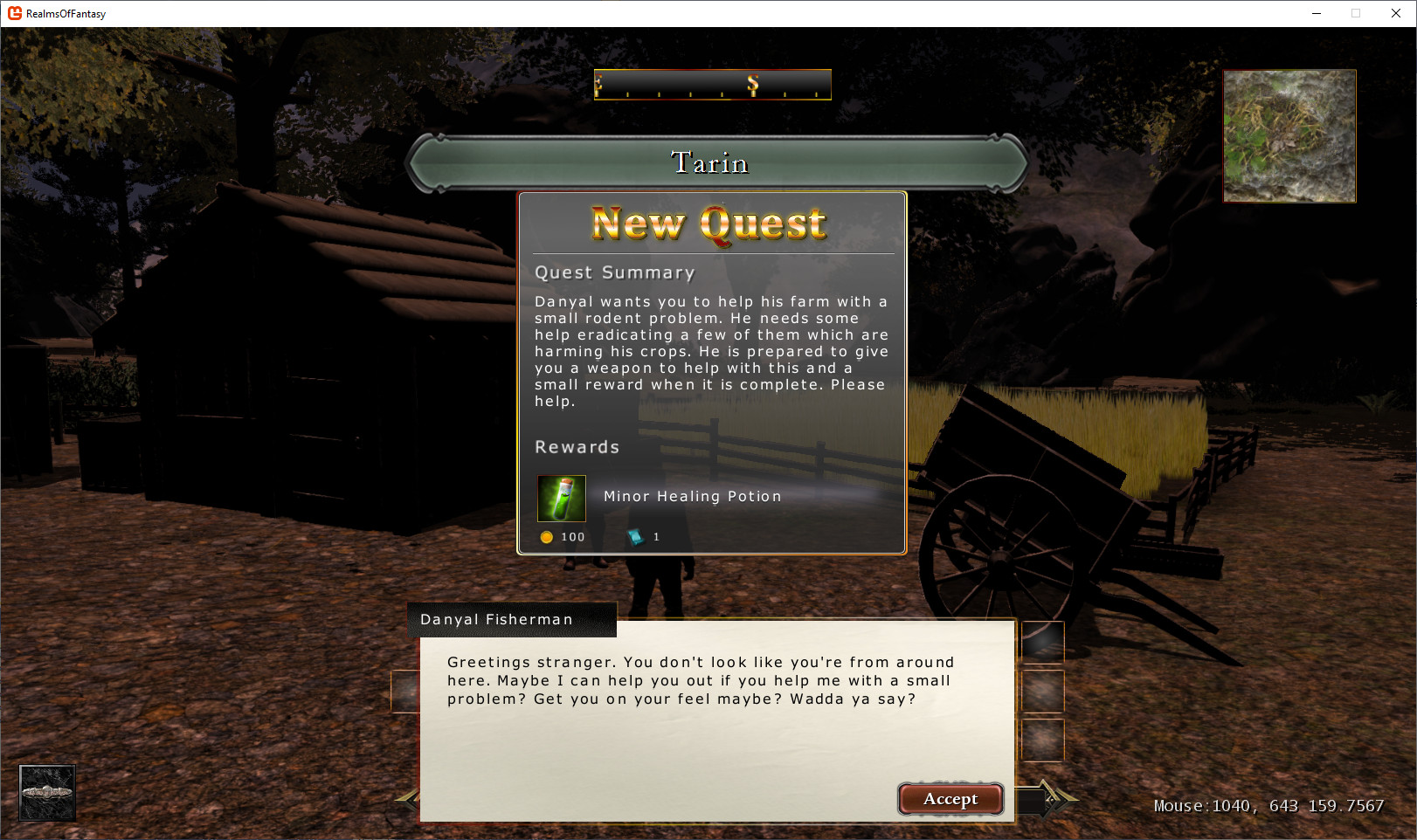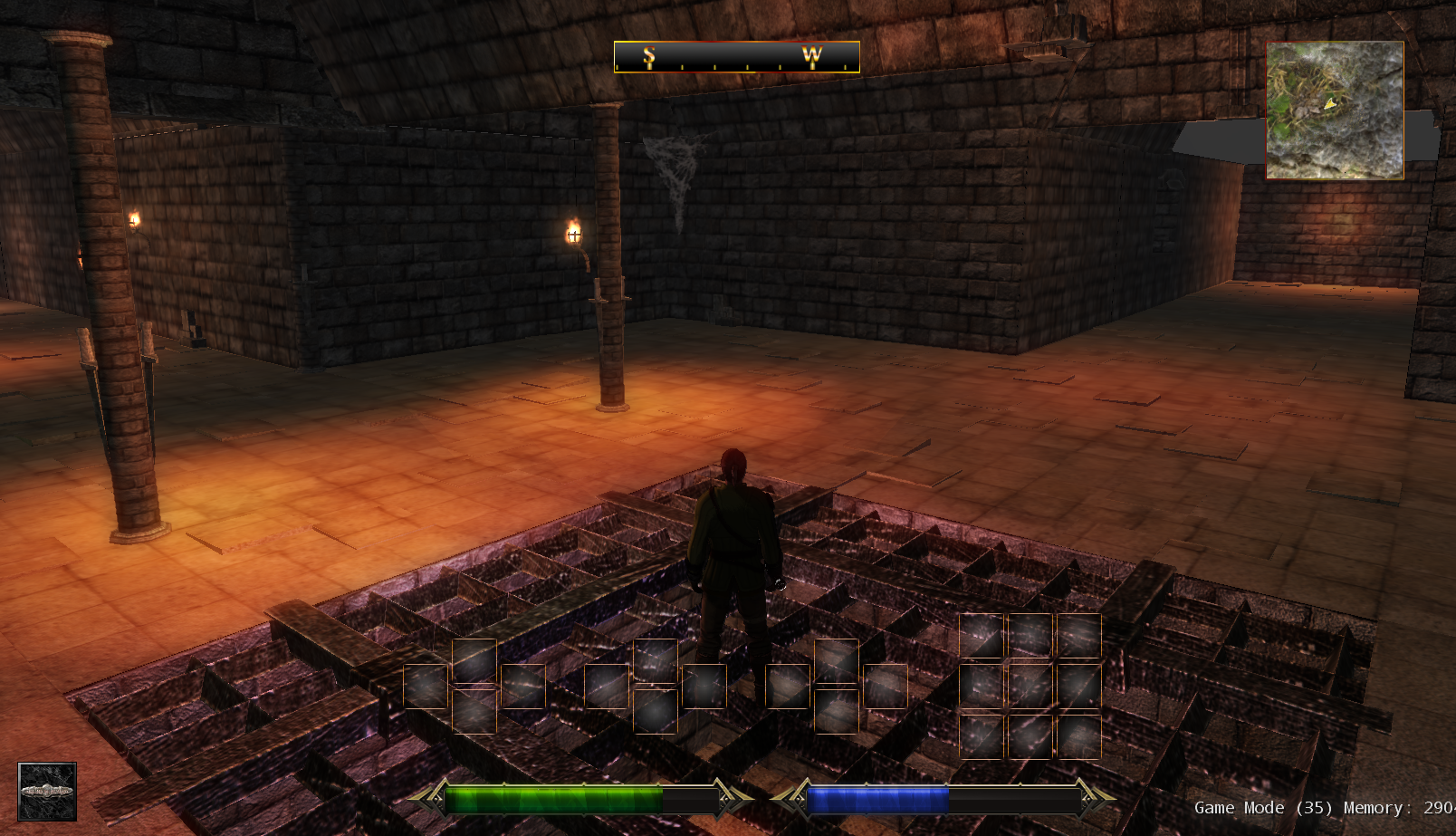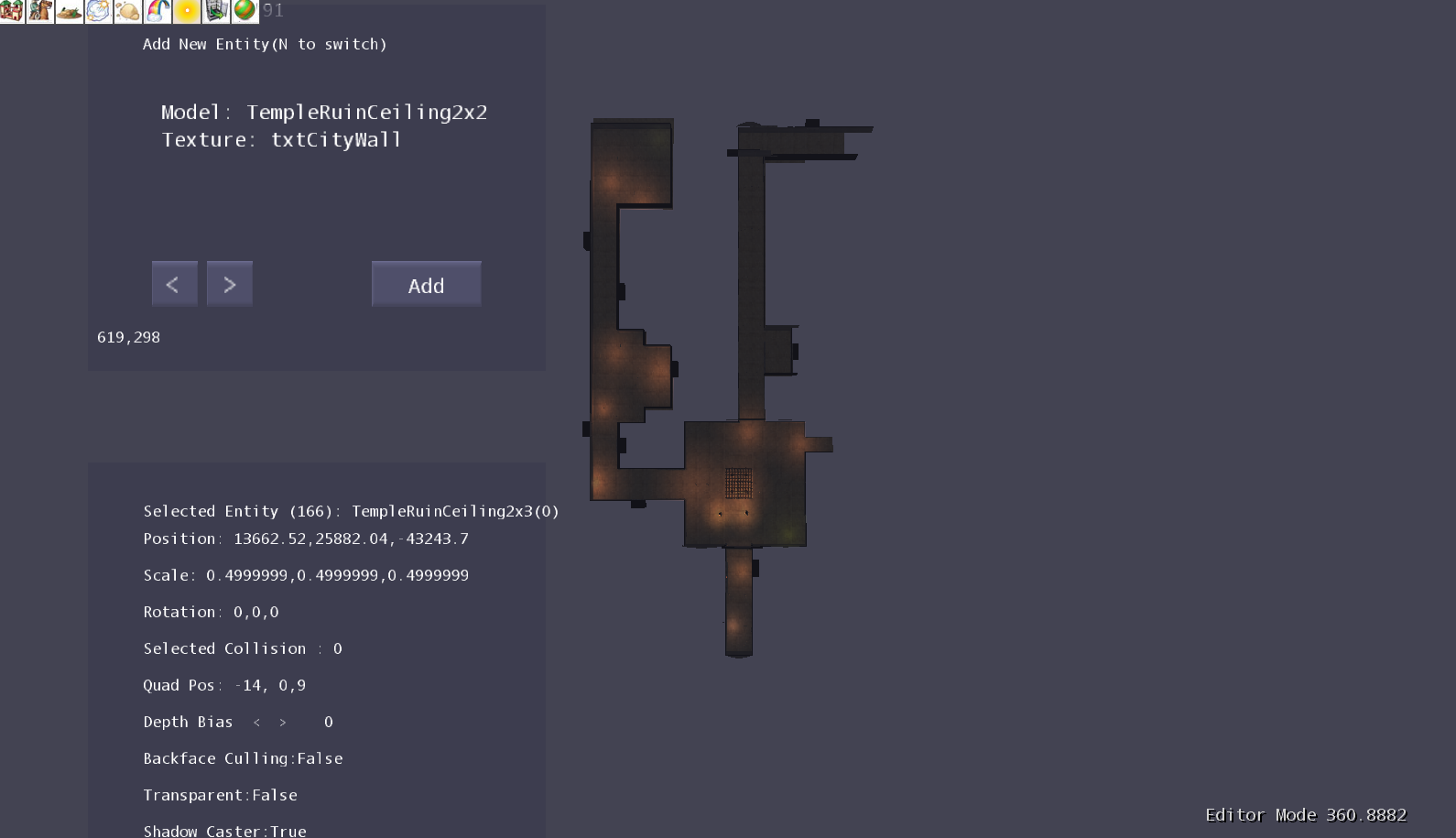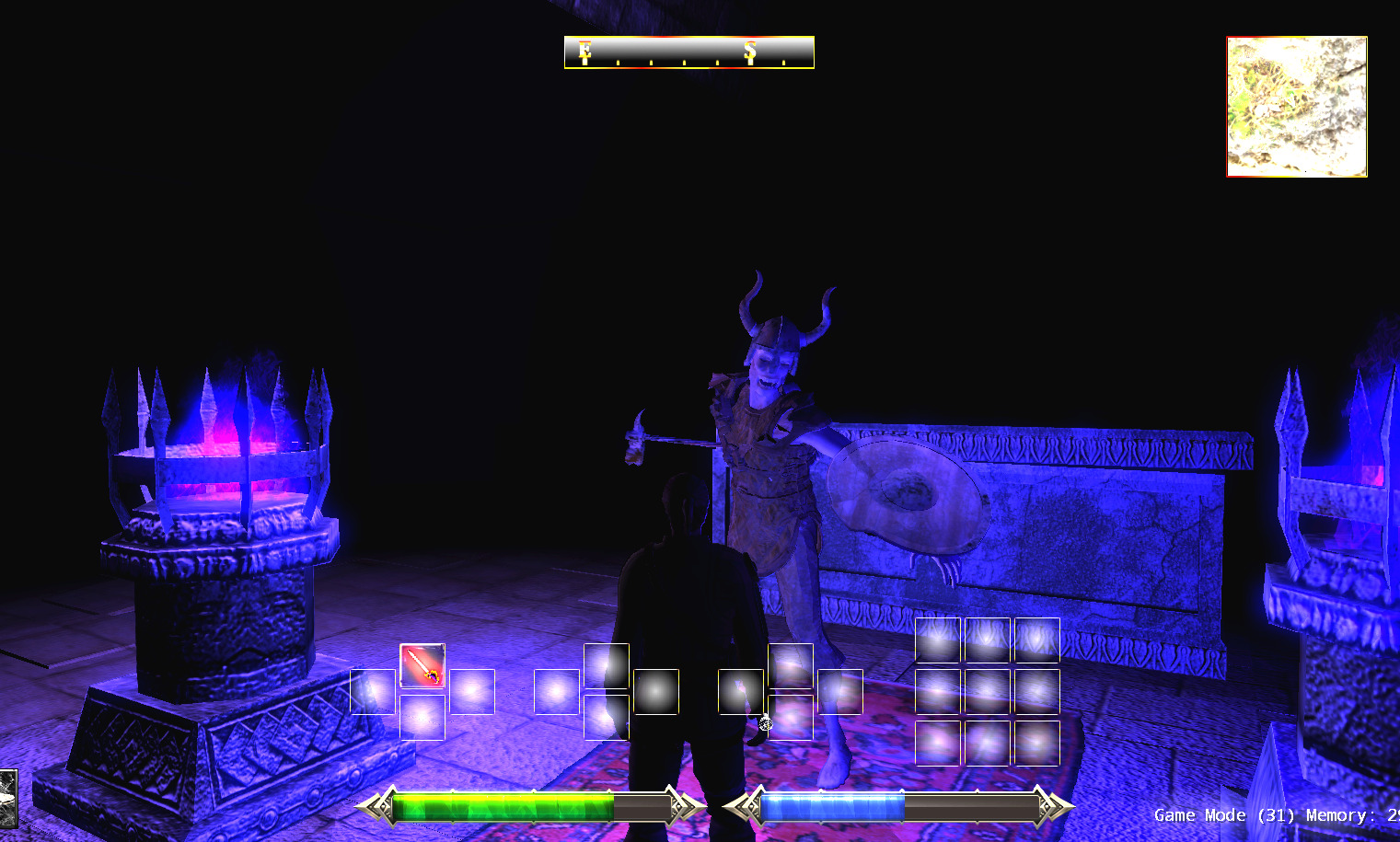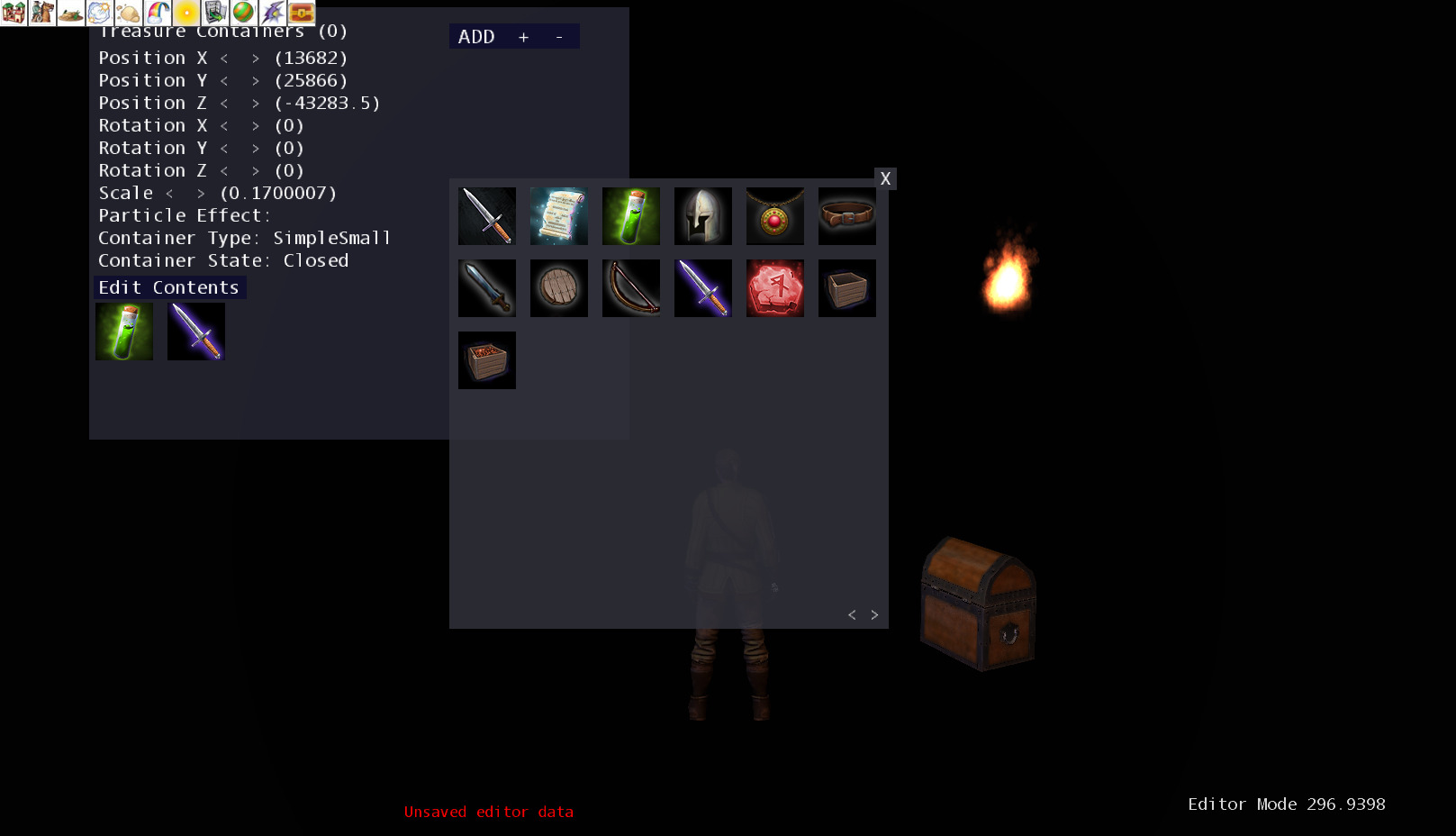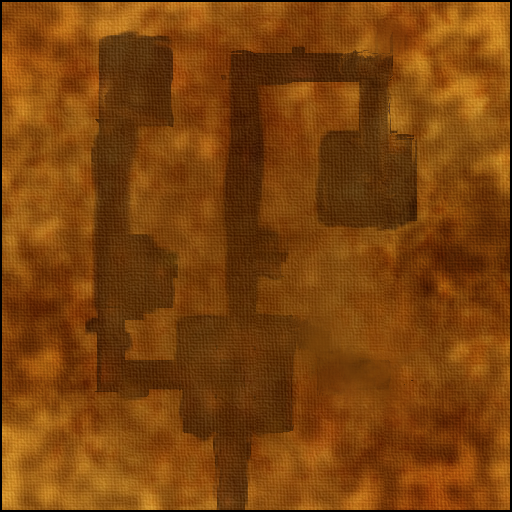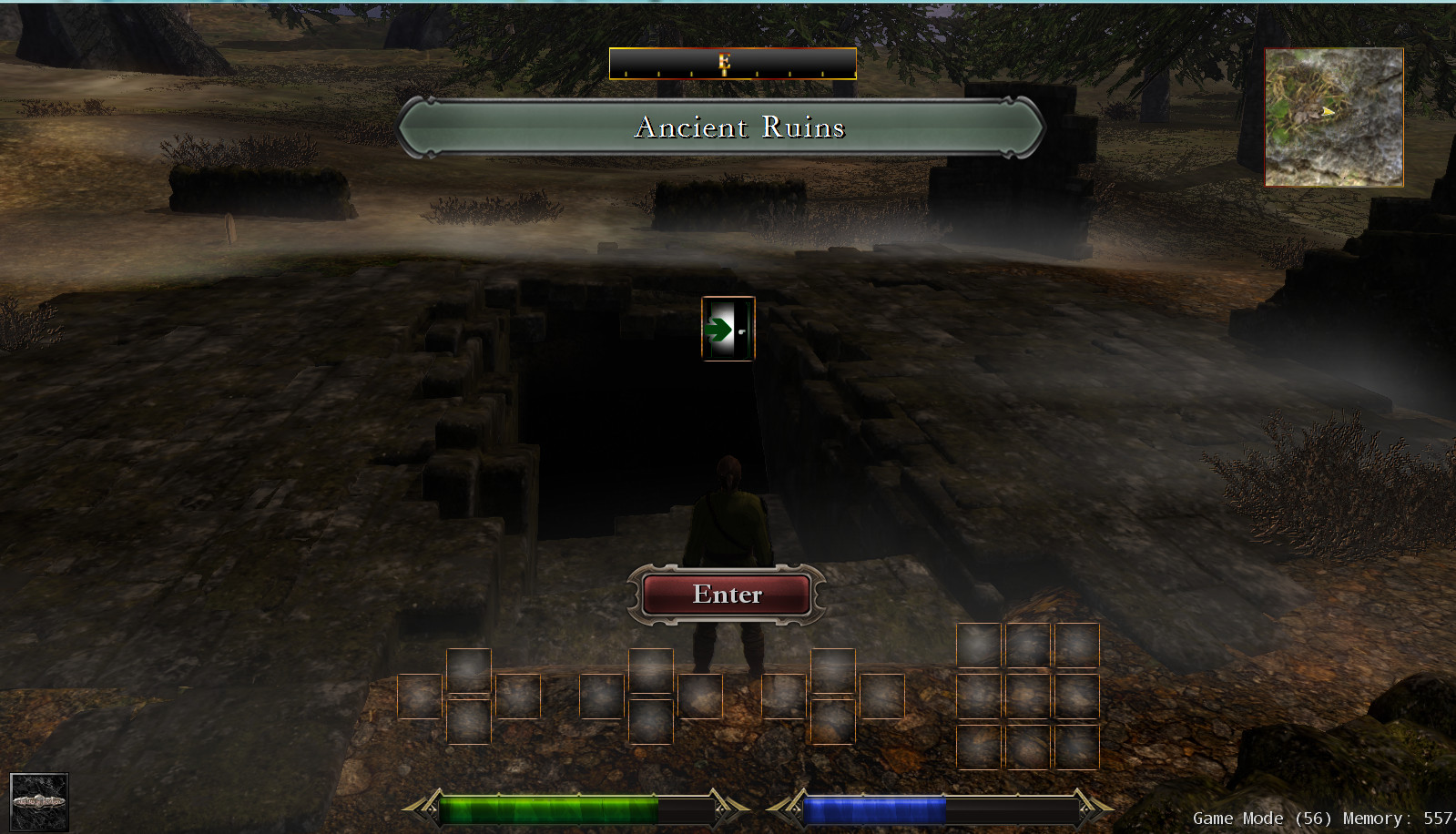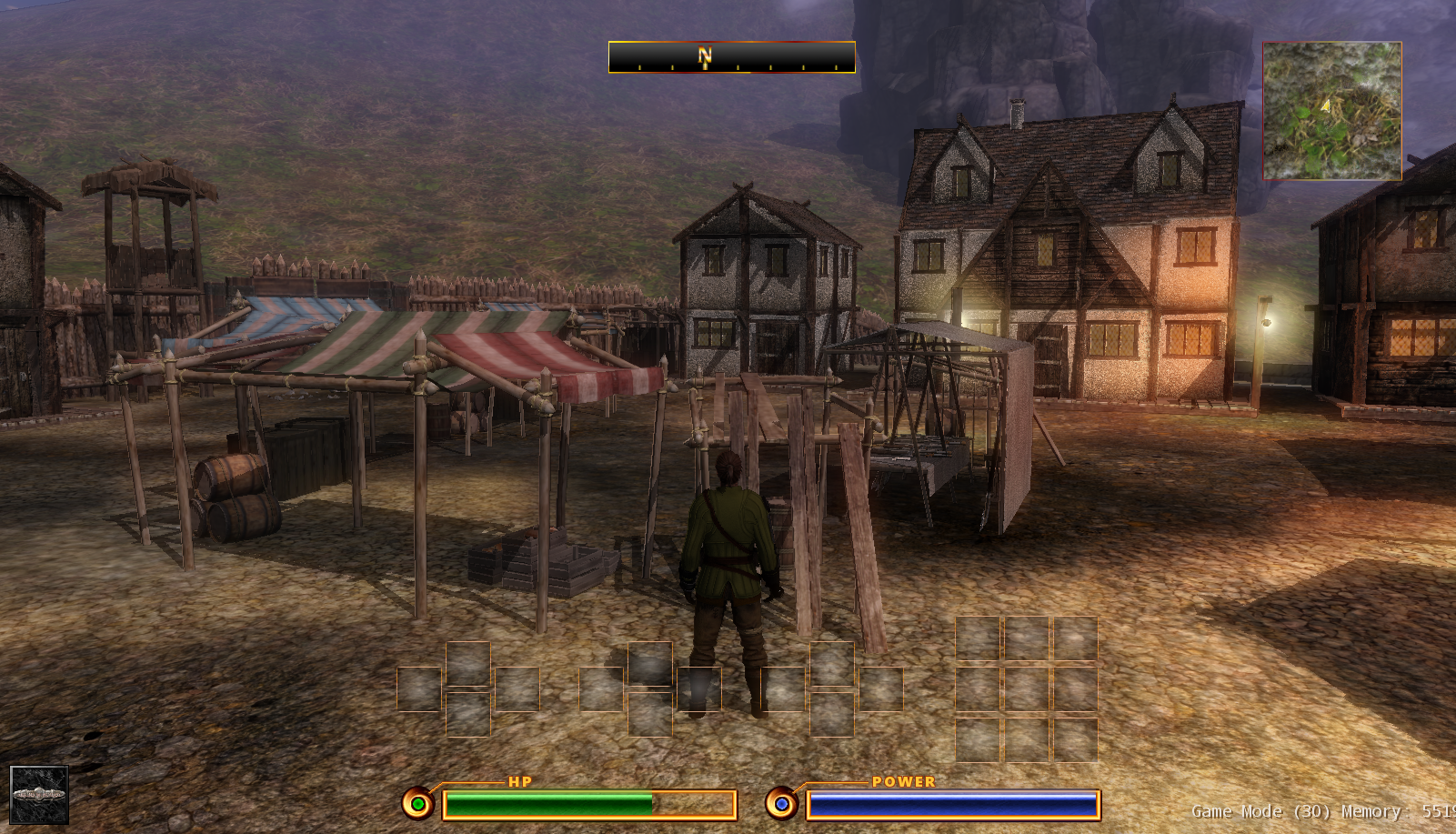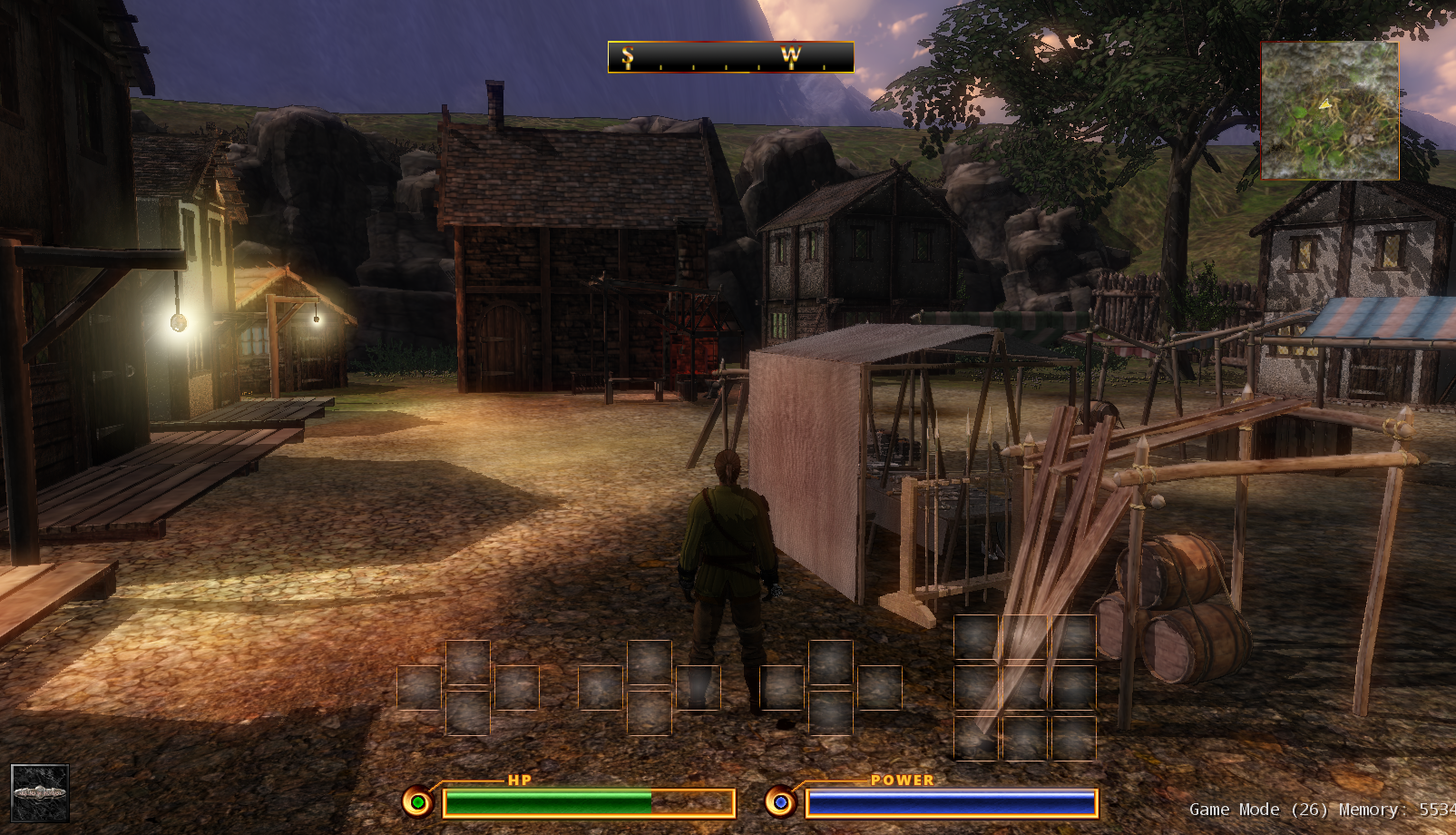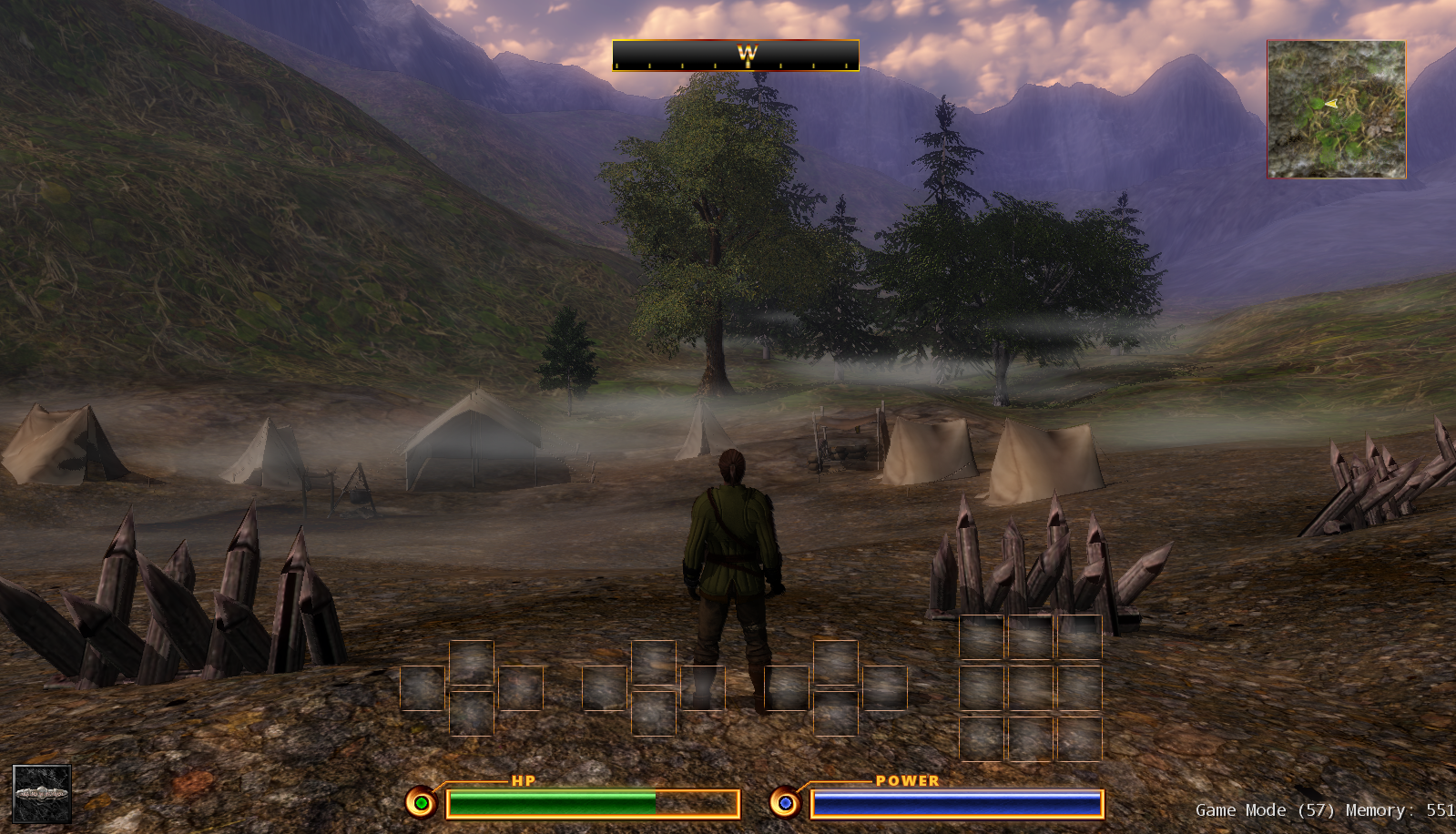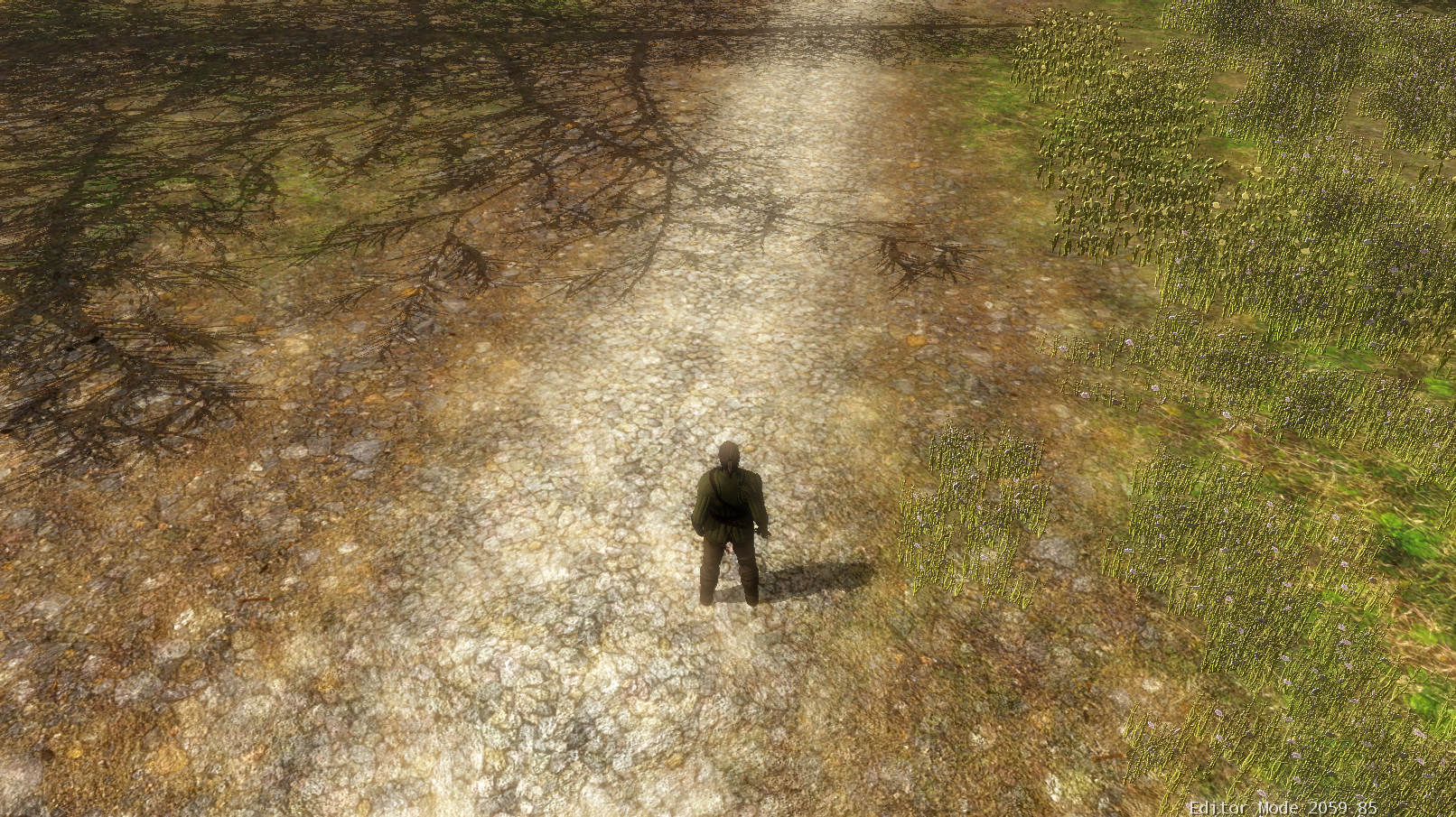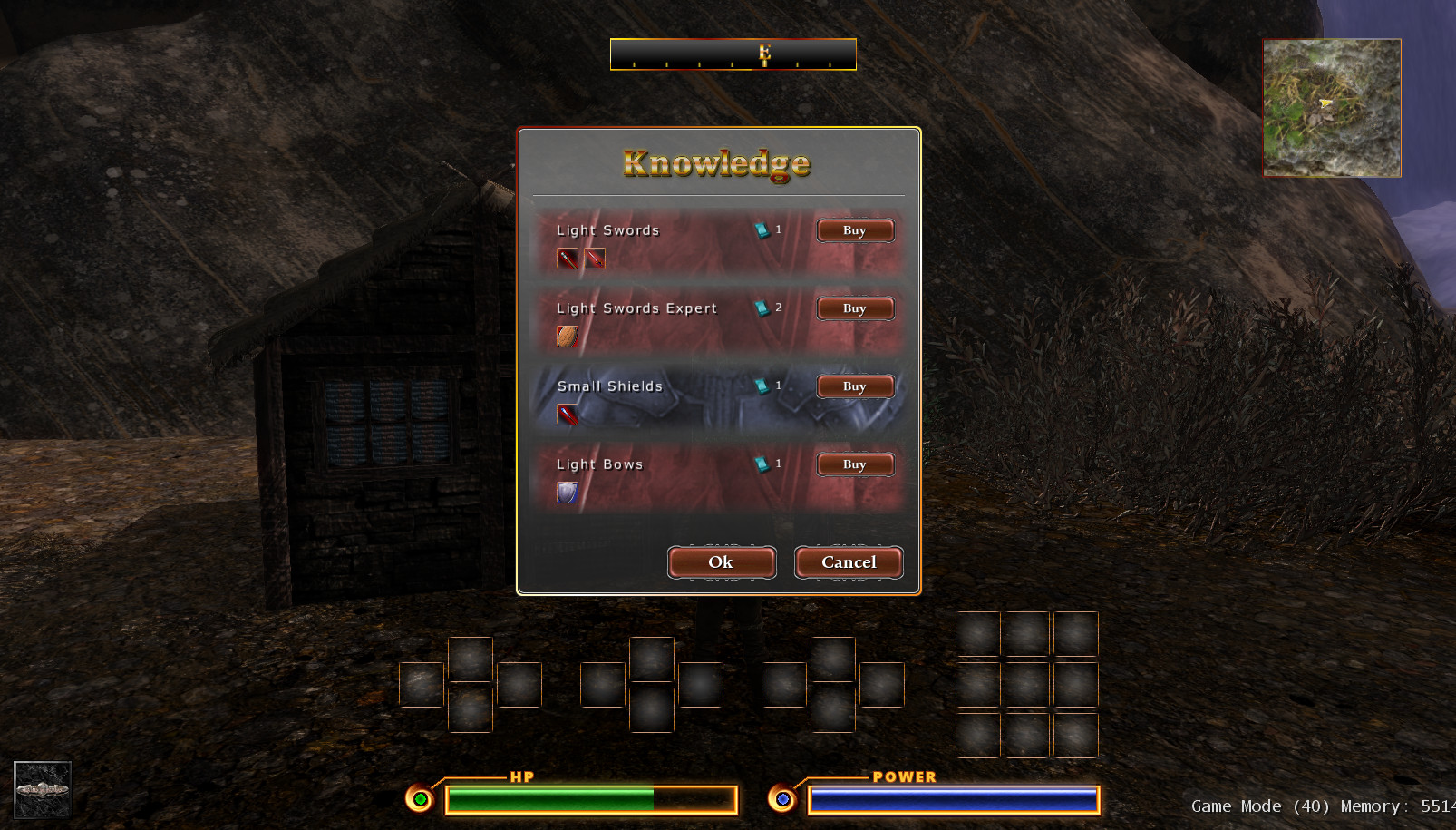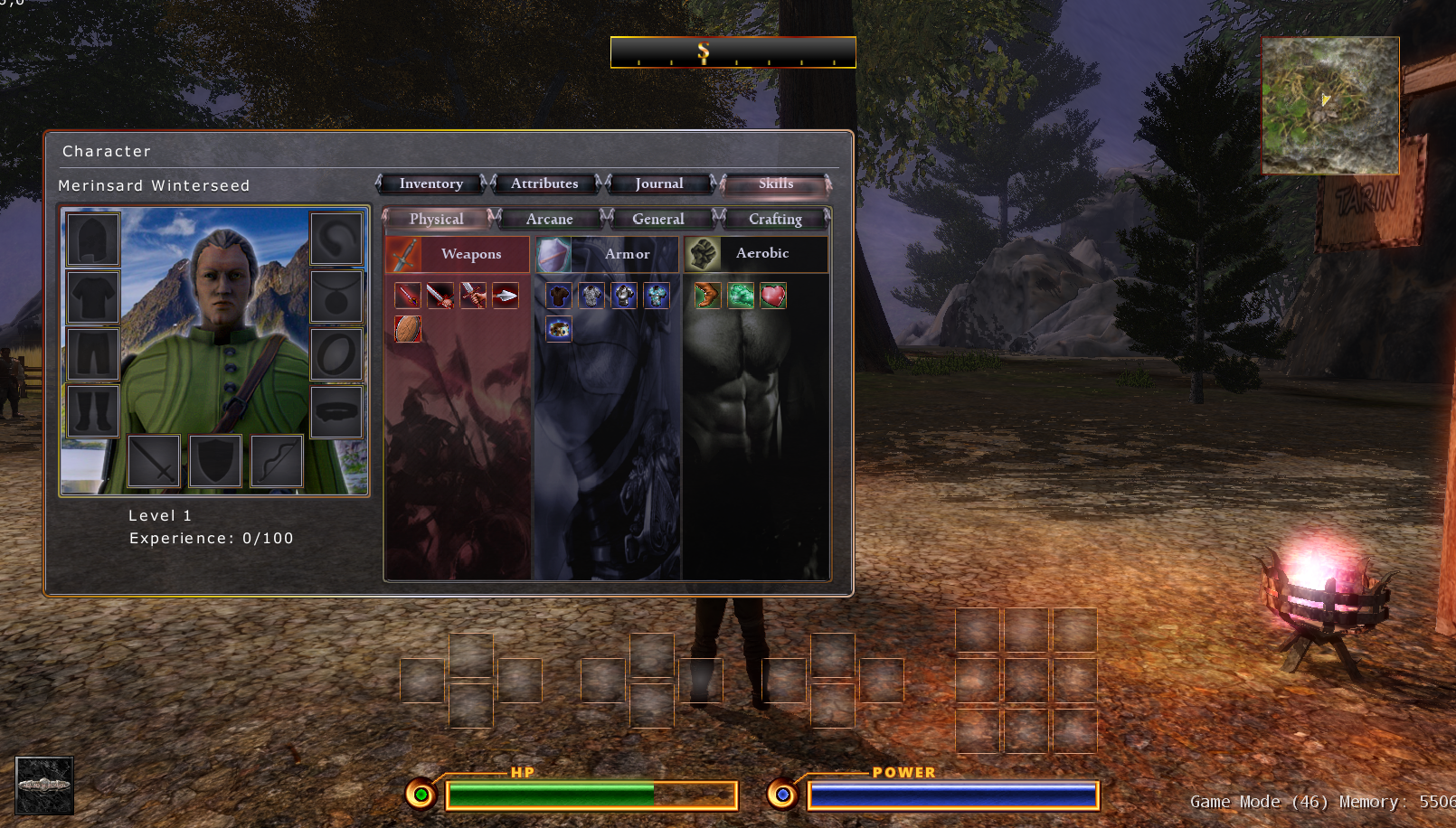Rather a dramatic title. But this is the final year of development. It will be finished this year. It will.
Ok, so what’s been added since my last update in err June (oops). A lot.
Water
So the world needed water of course. I wanted to be able to have shallow water for marsh areas. Deep lakes. A sea at the edge of the world and various ponds dotted about. This was fairly quick to develop and just uses a flat plane with a water/ocean shader. The reflects the sky and uses combined scrolling normal maps to give it the effect of waves or ripples. Everything can be adjusted from having no waves to huge choppy ones. How reflective it is and how dense and what color the water is.
Here’s and example of a marshy kind of shallow water. Set to murky, almost no ripples and barely reflective. I think it turned out pretty well.

Mini Tasks
These are small quests that you can pick up from a noticeboard in town. The reward you with Adventure Points (AP) which can be spent an adventure point merchant. AP can be used to buy various useful items but most importantly will allow you to buy keys of varying quality to access the dungeons in the land.
This notice boards look kinda like this:


Usually a task will be something like “Gather 5 Sage” or “Mine 5 Copper Ore” etc which means you have to have the relevant tool then go mine/gather a sparkling spot near trees, rocks and bushes etc.

I made various particle effects for each of the node types which turned out rather nicely. I can’t really show them in a static image but I’ll do an video in my next tweet or post to show those.
Maps
One thing that was surprisingly time consuming was making the world map and mini map work properly. I needed it to be covered in a “fog of war” until you explored it and have Icons, be zoom and scrollable and the mini map be centered on the player using a small part of the world map.
The math behind this made my brain hurt but I got there in the end and it works nicely. I’ll make/get a better frame and “old map” overlay for it at some point.


Improved Fog
I spent a little too long on this but I wanted the fog to be a little more realistic than just linear or exponential fog since I wanted it to hide the ground below more if you’re up high.. and it looks better if the fog collects more in low terrain. I had to keep this subtle or it would high all my deep water and valleys would end up completely fogged.
Here’s how it turned out.


Phew!
Looking back – I’ve been so busy. At least it’s something to do during the endless lockdown.
11 months to go.
PC Release this year at least. With PS4 (not sure about PS5) after if it goes well.
Until next time.
